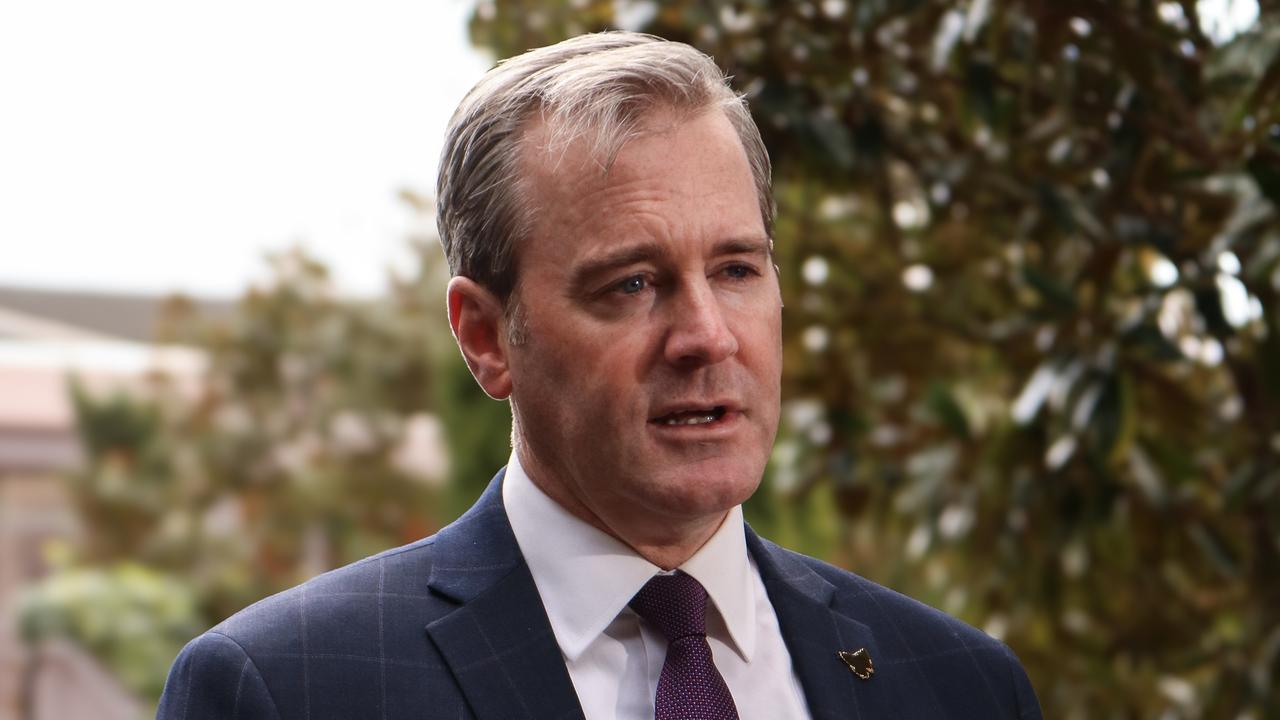Macquarie Point stadium plans lodged, revealing construction timeline, cost, visual impact
The planning application for the Macquarie Point stadium has finally been lodged, revealing key details about the project, including a budget blowout and a proposed construction timeline.

Tasmania
Don't miss out on the headlines from Tasmania. Followed categories will be added to My News.
Construction of the proposed Macquarie Point stadium is expected to begin late next year after the project cleared a major hurdle in the planning process.
An application for the stadium development has been lodged with the Tasmanian Planning Commission (TPC) in what the state government has described as a “significant milestone” for the project.
The Macquarie Point Development Corporation (MPDC) submission addresses a series of planning guidelines and reveals that the projected cost of the stadium has blown out from $715m to $775m, which CEO Anne Beach says is “not a cost increase” but part of “working through a design process”.
A financial impact report produced by KPMG, and attached to the application as an appendix, said the $775m capital cost figure did not include a number of “key revenue-generating elements” of the project, such as $14.3m for kitchen and food and beverage fitouts, $26.3m for audio-visual services, and $7.8m for LED ribbon advertising.
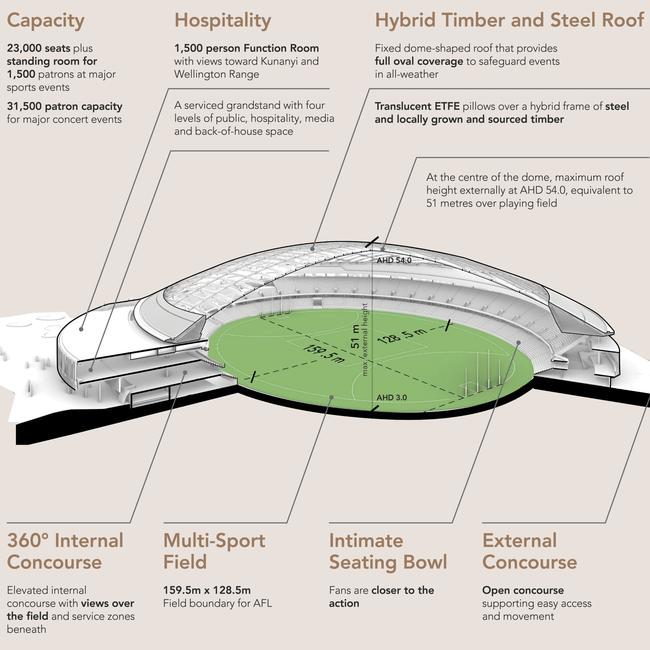
The state government has committed $375m to the stadium, while the federal government will contribute $240m. The AFL will chip in $15m and Sport and Events Minister Nic Street said private investors would meet any funding shortfalls.
The 260-page application covers stage one of the broader Macquarie Point precinct redevelopment, which encompasses the stadium and has been declared a Project of State Significance.
The TPC could take up to 12 months to assess the proposal and both houses of state parliament still need to approve it before the development can go ahead.
“There’s nearly 4000 pages of supporting reports that go along with our submission, and we have responded to every element of those guidelines, and we’re really confident we’ve got a really strong case,” Ms Beach said.
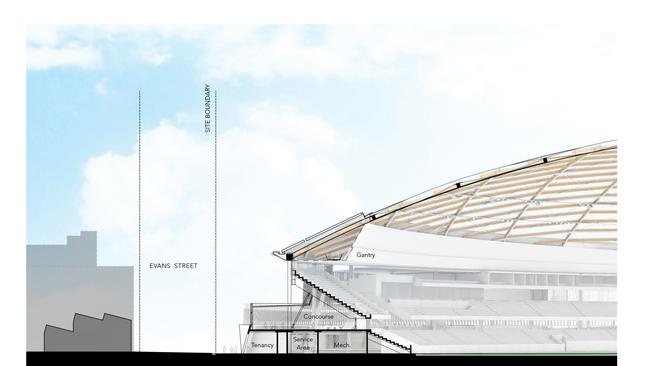
The roofed stadium will have the capacity to seat 23,000 people and will include a standing area, a seating bowl, and a continuous concourse wrapping around the facility. It will also involve the construction of a northern access road, a basement carpark, and outdoor cricket wickets.
The development will result in the relocation of the Goods Shed and will occupy a total above ground footprint of 58,500 sq/m.
The stadium will need to be built by 2029 in order to honour the government’s licensing arrangements with the AFL, with the Tasmania Devils set to officially enter the national competition in 2028.
The MPDC’s application says construction of the stadium would begin in late 2025 – provided that the necessary approvals are obtained and a contract for the build is awarded in time – and would continue through to the end of 2028.
The application concedes that the structure will generate “some” overshadowing of buildings on Evans St in the morning from March through to the winter months but says there will be no impact on private open space.
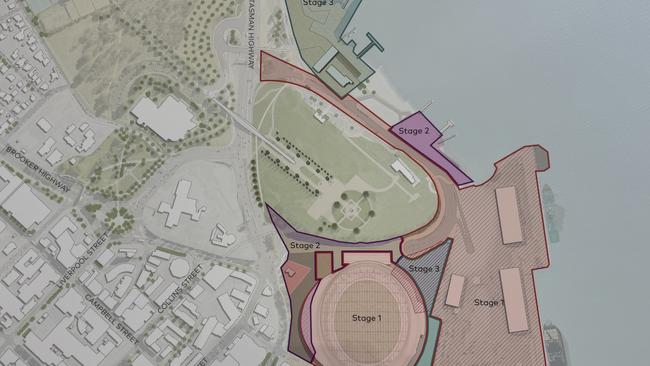
RSL Tasmania has spoken out against the development of the stadium, saying it would impact sightlines from the Hobart Cenotaph.
Ms Beach said the MPDC intended to “soften and integrate” the stadium with spaces such as the Cenotaph.
“The location of the cricket media is also being put in the south rather than north to reduce that physical bulk of the building to make sure we’re solving that impact [on the Cenotaph],” she said.
The MPDC acknowledged that the stadium would have “highly prominent” bulk, scale, and form, and would represent a “considerable change within the local visual context” but should be “seen as a public building and to act as a landmark in the city providing a point of reference”.
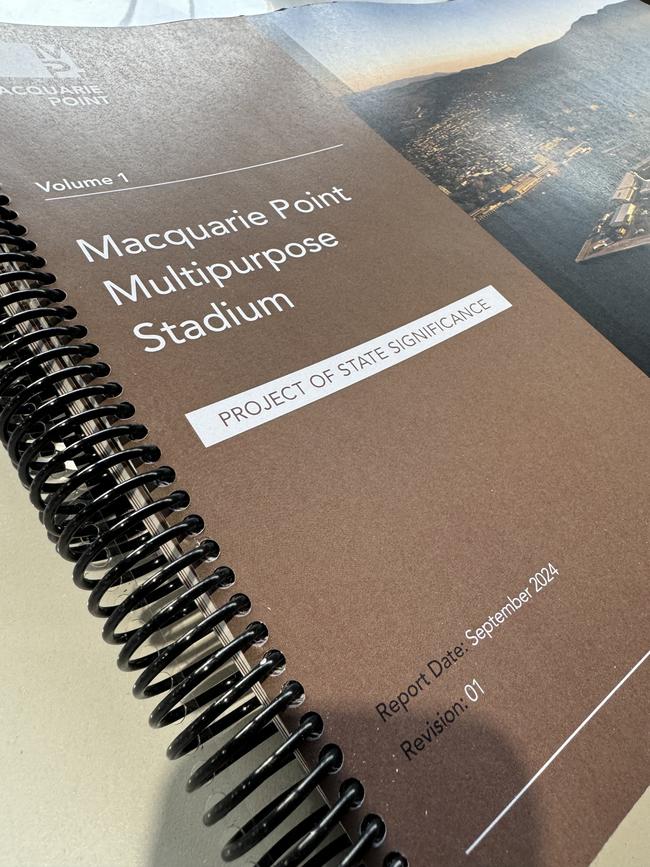
Major events at the facility are predicted to “significantly increase” use and demand for parking, traffic, and pedestrian movements and the MPDC will seek to address congestion by “reducing reliance upon private vehicles”.
It’s anticipated that 60-70 per cent of movements to and from the stadium for major events will be made via public and “alternate” forms of transport.
According to the application, construction of the stadium is projected to generate an estimated boost of up to $269m to Tasmania’s gross state product and an additional $27-32m every year once operational, as well as up to 204 full-time equivalent jobs.
Premier Jeremy Rockliff said the Australian government, which has committed $240m to the urban renewal initiative, had accepted the state’s precinct plan for Macquarie Point.
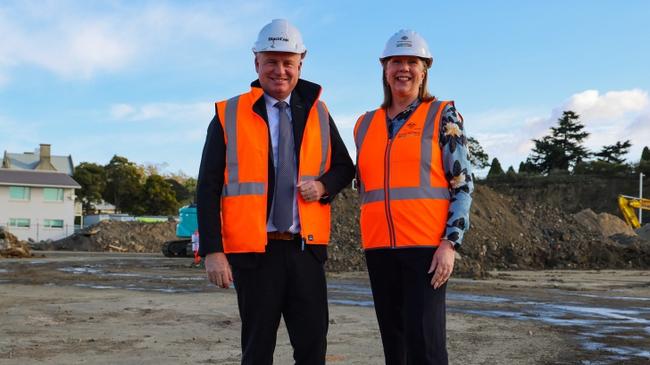
Mr Rockliff said the Liberals have delivered on a pledge to include housing, transport options, and the redevelopment of Macquarie Wharf under the proposal.
“Building on the remediation and work that has been done on site, this project will be a catalyst for the redevelopment and urban renewal of Macquarie Point, turning the site into a hub of economic activity showcasing world-class sport, art and events,” he said.
Greens deputy leader Vica Bayley said the stadium had “barely got to first base and it’s already tripped over its first budget”.
“No one believes that this stadium can be built for anything less than a billion dollars, and that’s why [the Greens] and so many people oppose it and want to take that billion dollars out of the budget and put it into the essential services … that Tasmanians need and deserve,” he said.
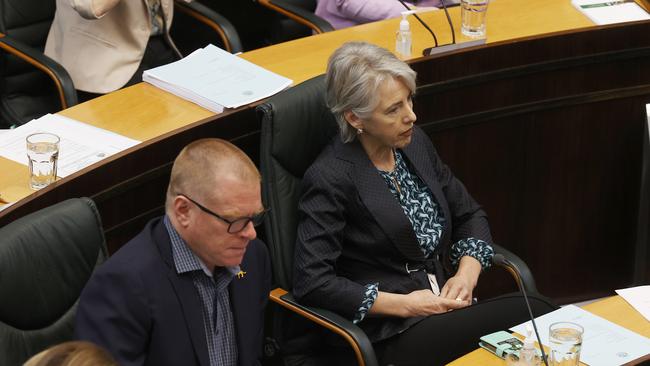
Federal Infrastructure, Transport, Regional Development and Local Government Minister Catherine King said there was “still work to be done” in order to deliver a Macquarie Point precinct that could “deliver both economic opportunities and create a more vibrant Hobart”.
“I look forward to receiving the Tasmanian government’s stakeholder report in coming months to understand how local views shape more detailed planning processes,” she said.
More Coverage
Originally published as Macquarie Point stadium plans lodged, revealing construction timeline, cost, visual impact




